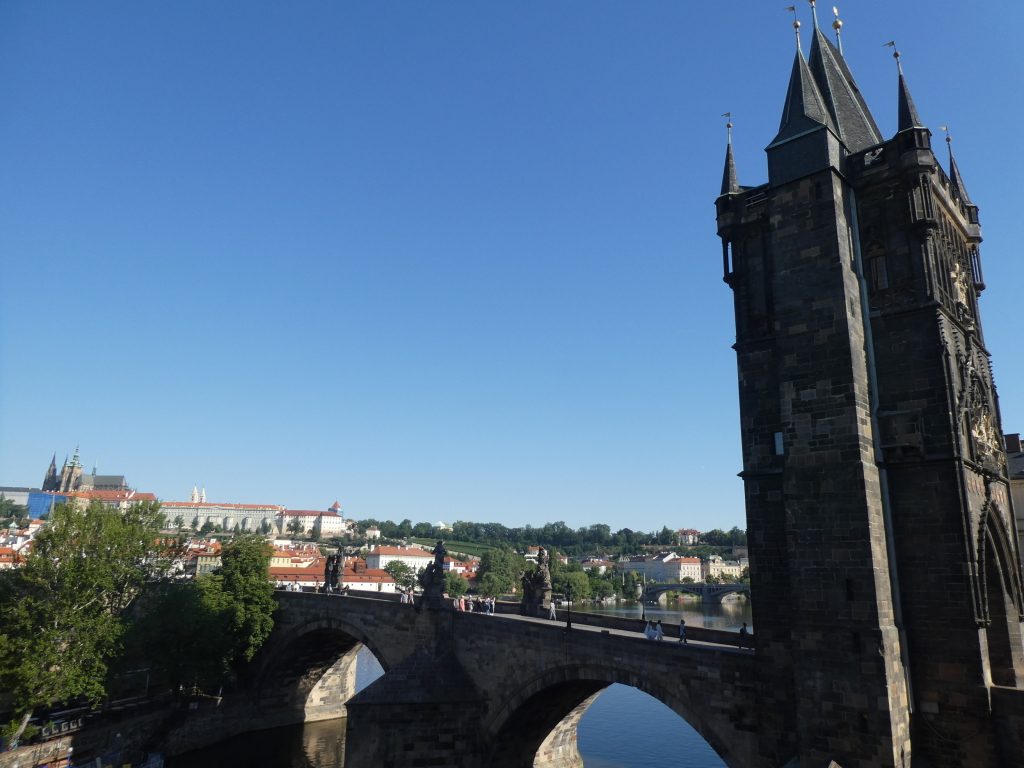
From June 24 to 27, an academic double-conferences has been taking place in Prague: IC2E 2019, the venerable seventh IEEE International Conference on Cloud Engineering, and ICFC 2019, the recently spun off first IEEE International Conference on Fog Computing. The Service Prototyping Lab at Zurich University of Applied Sciences contributed a tutorial on Kubernetes application engineering on the first conference day. The important research-inspired message conveyed is that Kubernetes is a nice container management platform, but not a cloud platform per se, and characterised by a lack of tools to ensure simplicity and quality in applications, and still emerging understanding of how to design applications in a technically and economically optimal way. This blog post reports on some of the conference discussion topics as a service for those who could not attend..
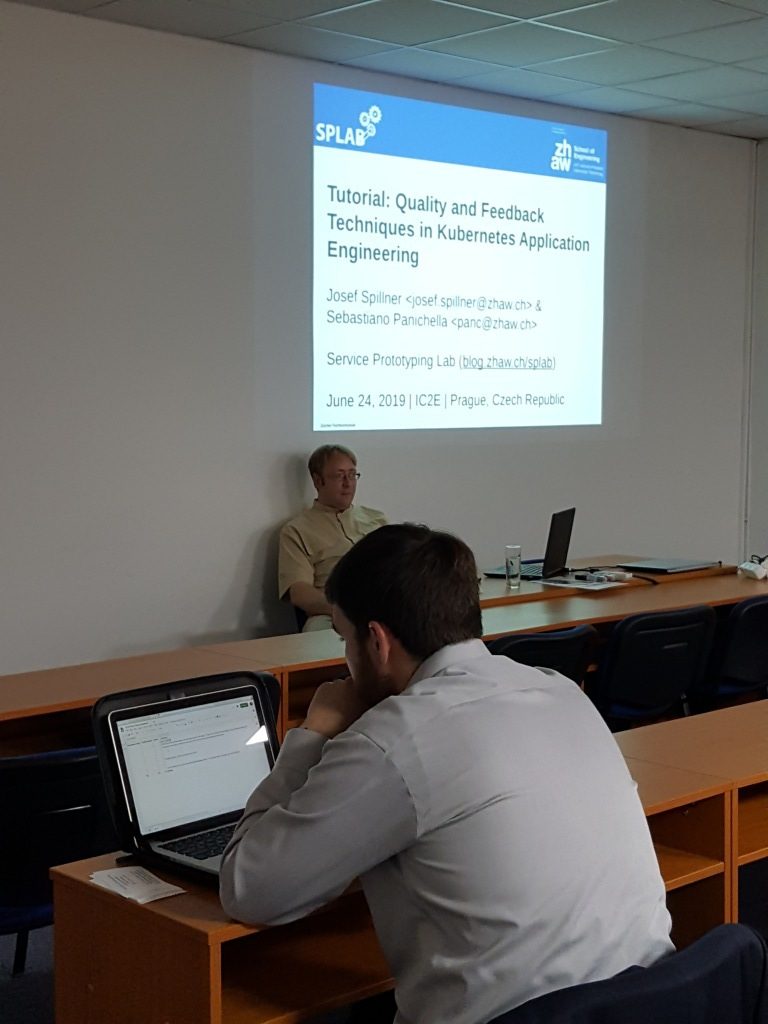
Before we started our work, we enjoyed a joint tutorial by Boston University (Peac Lab) and IBM Research on automated cloud analytics, applied to the discovery of software and systems through similarities and patterns in file names and file tree structures. The goal of this research is to figure out heuristically if problematic software packages are present in a file system. There was a fair bit of discussion on how a-priori knowledge (e.g. signed file manifests output by a CI/CD pipeline) would render this technique obsolete, how statically linked binaries (e.g. Go executables) could be scanned, and how much the version detection to look up problematic versions would be dependent on regularity of versioning schemes which is not given in practice..
Following up on previous tutorials on serverless computing (at PyParis’17, UCC’17, ICDCS’18), our new tutorial on Kubernetes application engineering (slides, transcript, code folder) departs from the view of Kubernetes as manager of containers towards a higher-level view of Kubernetes and related technologies as basis for building, deploying and managing cloud-native applications. Apart from a basic introduction, the tutorial had a research deep-dive into the quality assessment of Helm charts and a technical deep-dive into the auto-generation of operators.
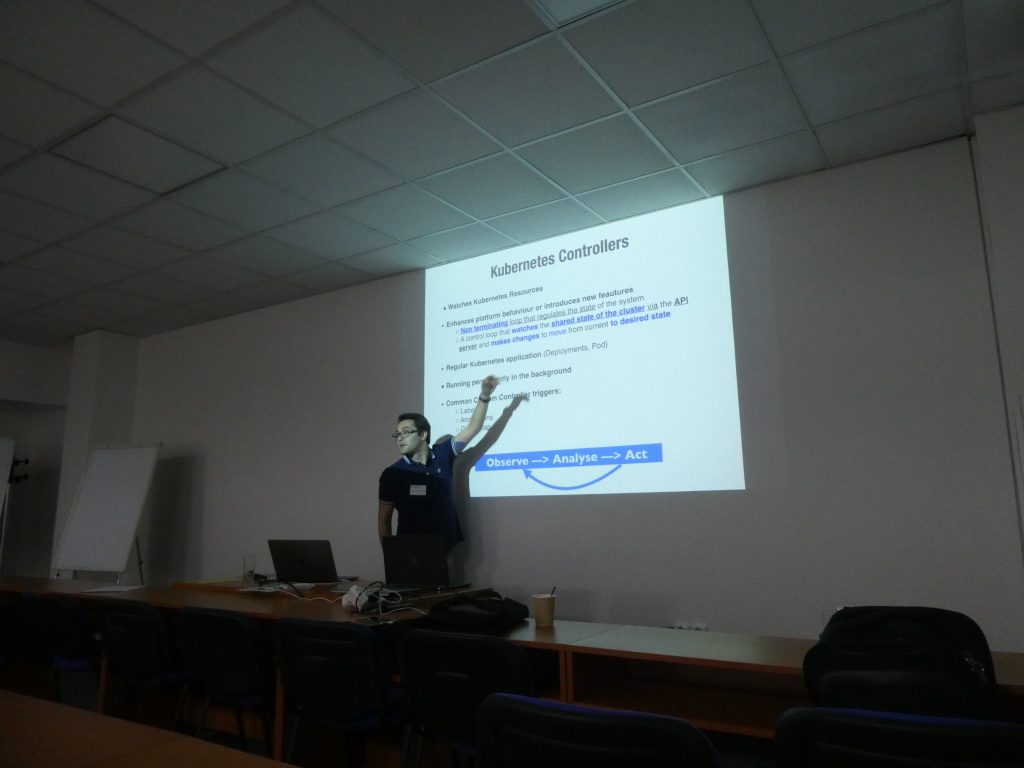
Six participants took part, registered themselves through a cloud function provided by us, and moreover followed the hands-on parts on prepared virtual machines hosted by our lab’s OpenStack cluster. Minor technical issues such as forgotten deployment namespaces occurred, were noted and will be fixed in revised editions of the tutorial. Overall, the topic raised sufficient interest and discussion on common pitfalls, the potential of Knative, and the mismatch of resource hog platforms in contrast to light-weight edge/fog infrastructure, among other topics.
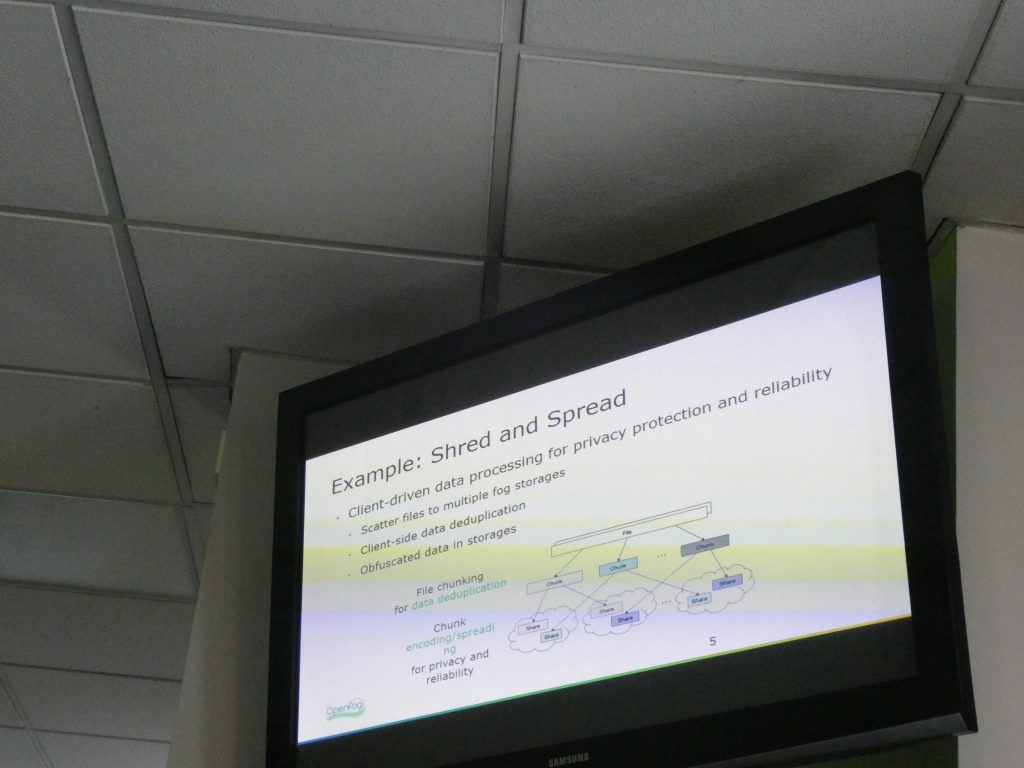
The first main conference day kicked off with a keynote by Mung Chiang who was behind the Open Fog Consortium, recently merged into the Industrial Internet. It focused on distribution and decentralisation aspects. Of high interest is that our previous research on stealth computing, i.e. dispersing transformed chunks of data onto different heterogeneous target systems and performing limited distributed computation on them, is now picked up by other researchers as well, as pointed out by the shred and spread presentation in the keynote talk. We may have to revisit this topic, and are prepared in case industry use cases emerge….

Further talks during the first day were mostly focusing on applications/AI and resource management aspects. Of interest due to being related to our work on CI/CD-integrated quality assessment of digital artefacts is the ModelOps approach by Hummer et al. which treats statistical models for various software frameworks as first-class artefacts. Technically interesting is the Barista approach, a serverless serving system for deep learning prediction, which auto-tunes Docker containers at runtime for vertical scaling, along with Docker Swarm’s horizontal scaling.
On the second conference day, the keynote by Kirk Bresniker led into the world of uniformly connected fabrics including the Gen-Z memory architecture in conjunction with RISC-V and other modern hardware advances. This will alleviate the current IO overload caused by the fact that IO is misused to carry both IO and IPC, leading to increasing congestion due to microservice intercommunication. The hypothesis is that within 2-3 years, serverless computing will turn into cloudless computing, moving beyond the current clumsy multi-cloud and cross-cloud approaches. This is driven by the observation that most data generated never makes it into data centres but remains in distributed locations in proximity to the data source.
Another talk peeked into the future as well and predicted that as opposed to current cloud, utility and serverless computing paradigms, we will have just computing eventually where the optimisation is shifting from technical matters to maximising the productivity of the developers. Containers were praised as the one de-facto standard many industrial players could identify with, although future container technologies will look different from today.
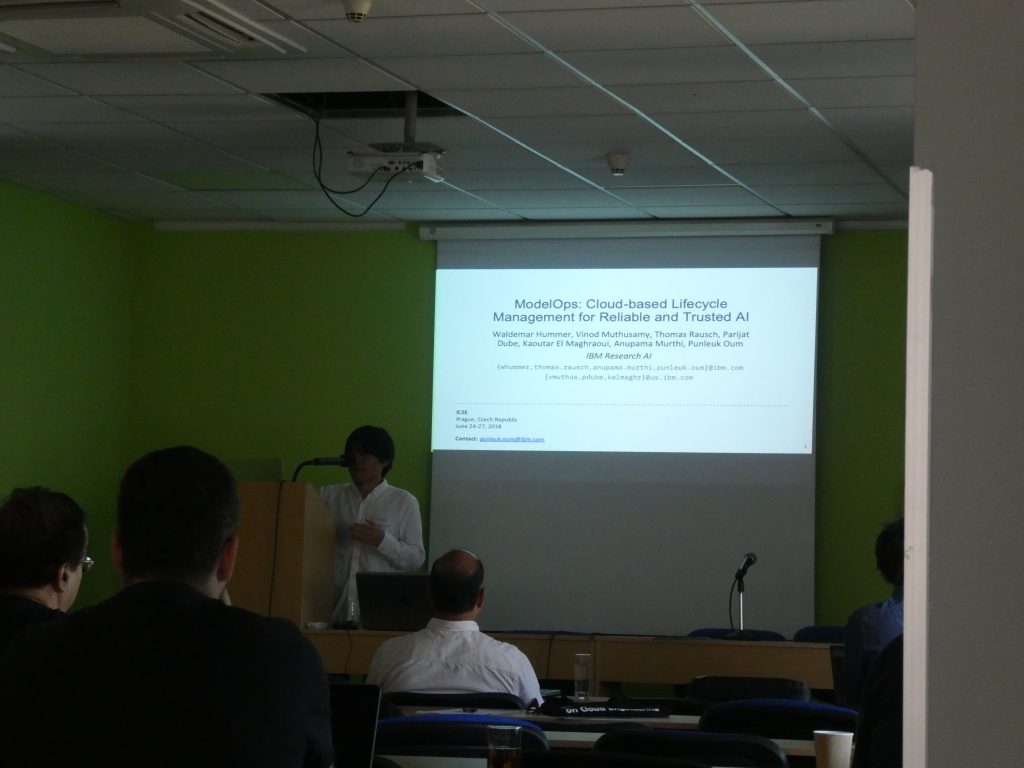
Overall, the conference line-up and topic selection mirrors the swingback of the pendulum from large centralised cloud research to smaller-scale interconnected platforms, with still confusing terminology around fog, edge, connected things and other terms.

A negative aspect, noted by us as well as other attendees, was the semi-professional organisation and communication quality of the conference committee upfront, leading to efforts in vain in some cases. The on-site organisation was much better in contrast, presumably due to entrusting this part to a local conference agency. We expect a much improved upfront part for the respective 2020 editions of IC2E and ICFC and offered our assistance to the organisers to this effect. In the coming months, six cloud computing conferences (UCC/BDCAT 2019, CloudCom 2019 (overlapping with Middleware), CCGrid 2020, IC2E/ICFC 2020) will be happening in Oceania, to which we are looking forward with emphasis on cloud application challenges by local software developers. Appropriate call for workshop papers will be published soon.